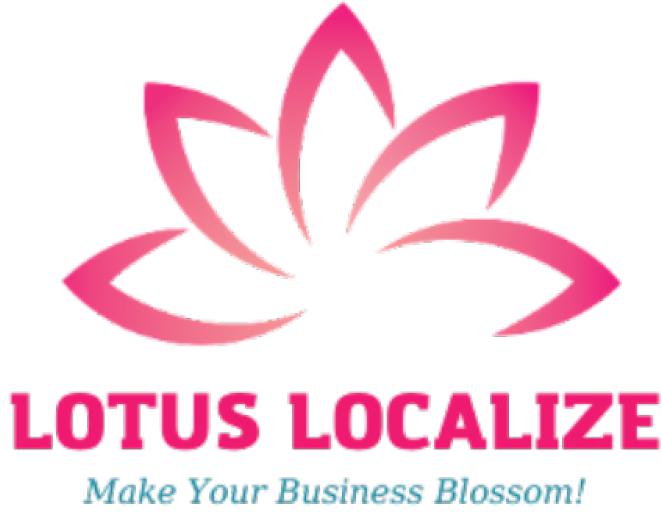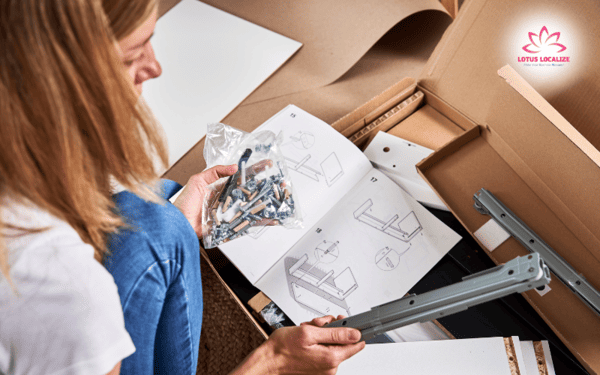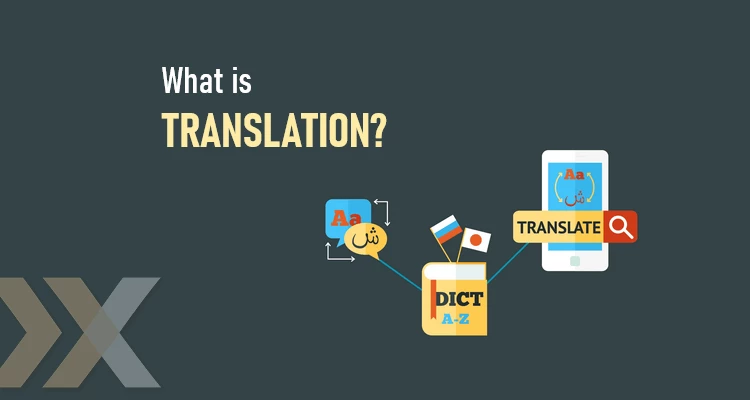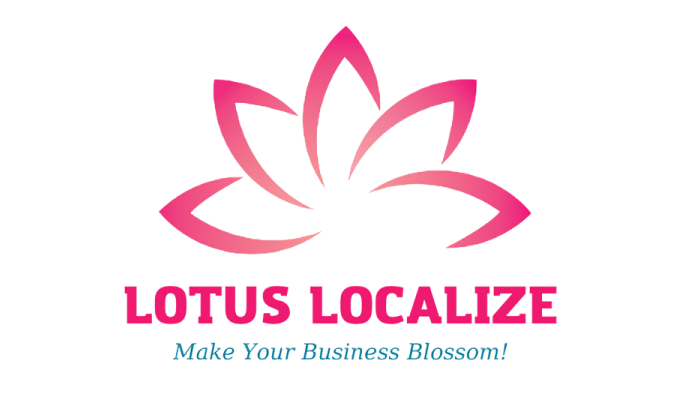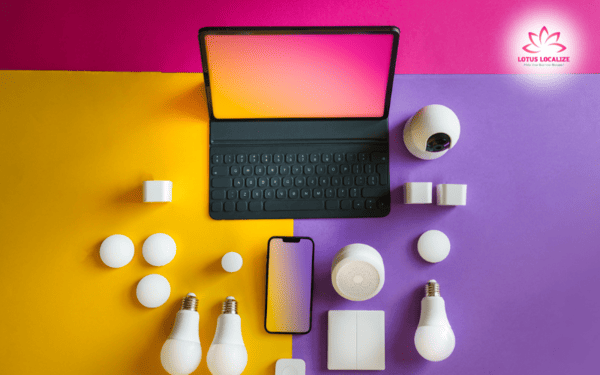
Consumer electronics translation that drives global usability and growth
As consumer electronics continue to expand globally — from smartphones to smart home devices — the need for accurate, user-friendly translations has never been greater. Consumer electronics translation goes beyond language; it ensures products are accessible, safe, and relevant across different markets.
In this article, we’ll explore the key aspects of this specialized field: what it involves, the unique challenges it presents, the benefits for brands and users, and the latest trends shaping translation in the electronics sector.
What is consumer electronics translation?
Consumer electronics translation refers to the process of adapting all relevant content related to electronic products into the target market’s language and cultural context. This includes technical documentation, user interfaces, marketing materials, software, and more.

Some typical content types involved in consumer electronics translation include:
- User manuals and guides
- Product packaging and safety labels
- On-screen display menus and UI/UX elements
- Embedded software and firmware instructions
- Marketing content for websites, videos, and campaigns
- Customer support content such as FAQs or knowledge base articles
In a highly competitive market, translating these materials accurately and fluently is crucial to brand perception, user satisfaction, and even legal compliance.
Read more: How product manual translation helps your business scale globally with clarity and confidence
Why accuracy and consistency matter in consumer electronics translation
In the consumer electronics industry, translation is not just a matter of language — it’s a core part of product functionality and user experience. A single mistranslated term in a setup guide or a misaligned UI label can lead to user frustration, product misuse, or even safety hazards. In some markets, it may also result in legal complications or non-compliance with local regulations.

Accuracy ensures that technical terms, instructions, and safety information are translated correctly. A single error can lead to product misuse, safety issues, or non-compliance with local regulations.
Consistency helps create a smooth user experience across manuals, user interfaces, apps, and support content. When terms or instructions vary across platforms, it confuses users and undermines trust.
To manage this, professional teams use:
- Glossaries and style guides to maintain clear, consistent terminology and tone
- Translation memory and CAT tools to speed up work and ensure uniformity across content
- Quality assurance processes to catch errors before release
In short, getting the language right builds user trust and protects the brand — making translation a vital part of product success.
Unique challenges in translating electronics content
Translating for the consumer electronics industry comes with a unique set of challenges that demand both technical expertise and operational agility. To ensure successful global launches, language teams must overcome the following hurdles:
Technical complexity and evolving terminology
Consumer electronics often involve advanced, rapidly evolving technologies. Translators must be familiar with specific technical jargon and stay up to date with new product lines and features. Mistakes in technical translation for electronic devices can lead to user confusion, product misuse, or even safety risks.
Multiple content formats
Electronics content exists in various forms — printed manuals, digital PDFs, software strings, mobile app UIs, touchscreen instructions, voice command menus, and more. Translators must handle multilingual support for consumer electronics across platforms while maintaining a consistent voice and tone.
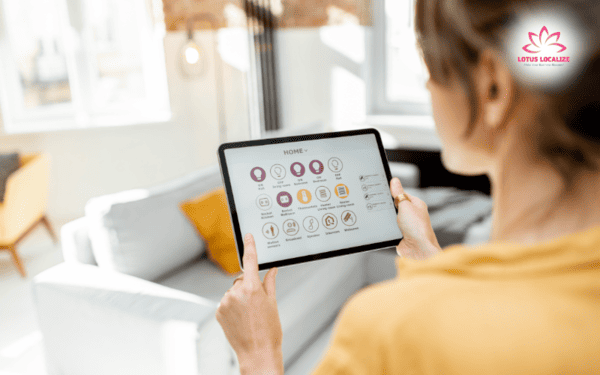
Fast product cycles
Consumer electronics companies release new models frequently. Translation teams must work under tight deadlines while preserving quality. Automation tools, translation memory (TM), and CAT tools in consumer electronics industry play a critical role in meeting these demands.
Regulatory compliance and localization accuracy
Product labels, warranty documentation, and instructions must comply with local regulations. Inaccurate or poorly localized content can result in legal issues or product recalls.
In summary, translating for consumer electronics requires more than linguistic fluency—it calls for specialized workflows, technology integration, and constant alignment with product development. Addressing these challenges effectively paves the way for seamless international expansion and user trust.
Read more: Electronics translation: Unlocking global success for tech companies
Common languages for consumer electronics translation
Consumer electronics are shipped globally, and localization efforts often target markets with high consumer adoption rates. The most frequently requested languages for consumer electronics translation include:
- Chinese (Simplified and Traditional) – For manufacturing centers and large consumer markets
- Japanese and Korean – Technology-savvy markets with strict localization standards
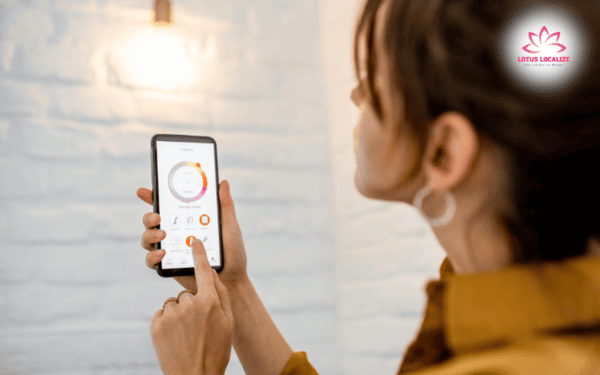
- German, French, and Spanish – Covering key regions in Europe and Latin America
- Vietnamese, Indonesian, and Thai – Fast-growing Southeast Asian economies
- Arabic and Turkish – Expanding demand in the Middle East
In each of these regions, translating to the native language user experience is essential to compete and win market share.
Benefits of professional translation in the electronics sector
Investing in professional consumer electronics translation brings more than just linguistic accuracy — it adds real value across the entire product lifecycle.
- Enhanced user experience: When users can interact with devices in their native language — from setup to support — they feel more confident and satisfied. This leads to fewer errors, returns, and customer support requests.
- Stronger global branding: Well-translated content reinforces brand quality and shows respect for local users. A consistent tone and accurate terminology help strengthen brand trust worldwide.
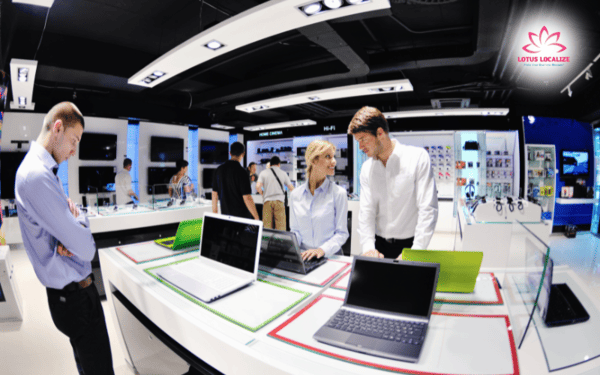
- Legal and regulatory compliance: Many markets require product information to be provided in the local language. This includes safety labels, environmental warnings, and warranty terms. Professional localization ensures full compliance with regional laws.
- Operational efficiency: With tools like translation memory and CAT platforms, businesses can streamline updates, reduce turnaround time, and cut localization costs without sacrificing quality.
- Competitive edge in global markets: Brands that localize their products properly are better positioned to win in international markets compared to those using generic or machine-only translations.
In summary, professional translation is not just a support function — it’s a strategic investment that boosts user satisfaction, regulatory readiness, and global growth.
Emerging trends in consumer electronics translation
As the consumer electronics industry evolves, so do the tools and methods used to localize its content. Here are three key trends shaping the future of electronics translation:
- AI-powered translation and post-editing: Machine translation (MT) is improving, especially for technical content. Though human review remains essential, post-editing MT helps speed up translation while AI supports terminology and quality checks.

- Multimedia and cross-channel localization: With more videos, apps, and AR content, translating subtitles, voiceovers, and scripts requires both accuracy and cross-platform consistency, demanding specialized expertise.
- Integrated localization in agile development: Continuous localization means translations are updated alongside software development, ensuring timely and consistent multilingual releases.
As consumer electronics become more integrated into our daily lives, so does the demand for products that speak our language — literally. Consumer electronics translation is no longer optional; it is essential for global success.
It enhances user experience, ensures legal compliance, protects brand value, and supports fast, efficient market expansion. By partnering with experienced language professionals and leveraging smart localization technologies, electronics brands can build deeper connections with their customers worldwide.
Trust Lotus Localize for expert consumer electronics translation that meets global standards and elevates your user experience.
If you have any questions or need assistance with document translation services for many industries: life sciences translation, education translation, technology translation, financial translation, marketing translation, manufacturing translation, government translation,… and interpretation services: escort interpreting, simultaneous interpretation, remote interpretation, and localization services: software localization, game localization, app localization,… please contact Lotus Localize immediately at +84 866 224 968 or visit the website: lotus-localize.com for advice on the best solutions!
QUALITY PROMISE
Lotus Localize offers consistent, high-quality service delivery in all customer engagements. Our in-house translators and staff adhere to well-established business processes, allowing us to communicate properly, deliver on time, and surpass client expectations.
